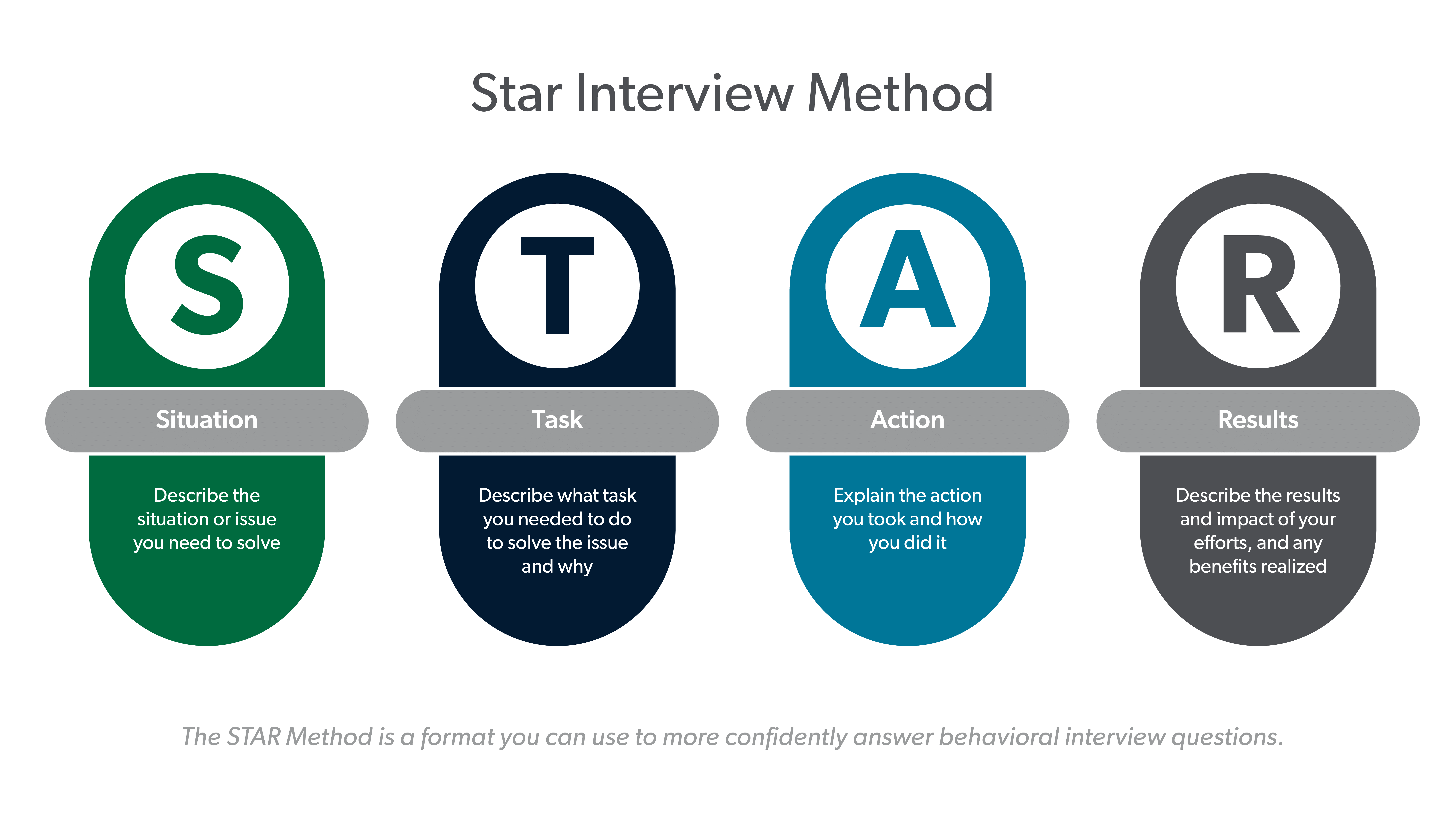Article
One of the most common interview methods is behavioral-based interviewing, but why is this technique so important in helping employers identify the right candidate?
The purpose of the behavioral interviewing technique is to give a potential employer information that will help them ascertain your skill compatibility, cultural fit and competency for the position. Often, you will be prompted to provide in-depth examples that demonstrate your ability to complete certain tasks or provide insight on how you would approach a scenario.
By responding to these behavioral questions, you are highlighting to the interviewer your key skills, problem-solving abilities and the thought processes you use when tackling different situations — all valuable insight for an employer to consider when assessing fit for a role.
Often, behavioral questions will begin with phrases like:
But what’s the best way to answer behavioral questions in a cohesive way, making sure you’re sharing all the important information with an interviewer? One common technique to help shape a thoughtful response when responding is using the STAR method.
The STAR method is a popular way to answer behavioral-based interview questions. STAR stands for situation, task, action and result. The STAR method helps an interviewee break their answer into four key parts when describing a situation or answering a question:
'S' Situation: What’s the situation or issue you need to solve?
'T' Task: What task was required from you to solve the issue?
'A' Action: What action did you take?
'R' Result: What was the result?
Preparation and research are key when interviewing. Becoming familiar with common behavioral interview questions gives you a chance to think of situations and examples in advance of your interview so you can feel more confident sharing them with the interviewer.
Creating and practicing answers to common behavioral questions that align to the role your interviewing for will help demonstrate that you can articulate your responses and provide relevant examples of your experience — which will help the interviewer follow along and better understand your point of view.
Here’s an example that demonstrates how you might use the STAR method: Tell me about a time when you improved a process.
Using the STAR method you could respond as follows:
In this example, using the STAR method allowed the interviewee to articulate their interpretation of the problem, the tangible action they took to solve it and the results.
The STAR method is a great way for you to share information about your experiences in a way that is clear, concise and highlights the value you brought — or impact you made — to each situation.
Providing thoughtful answers to behavioral interview questions can help make a great impression on an interviewer. The STAR method helps provide the interviewer with insight into how you might tackle similar situations if you were part of the team, and ultimately helps to answer the question, “Why should we hire you.”
Aside from STAR interview method, there are other techniques that you can use to answer behavioral interview questions. They are called SOAR method and CAR. SOAR stands for situation, obstacles, action and result while CAR means challenge, action and result. Whether you choose to use either STAR, SOAR or CAR method, having a format to help frame your responses in a clear way will assist you in answering behavioral interview questions effectively, and more confidently.
Ready to try using the STAR interview method in your next job interview? Reach out to your local Aston Carter office or browse Aston Carter’s job board to learn more about job openings in your area.
*This article was originally developed by Aston Carter EMEA and adapted for Aston Carter North America.

